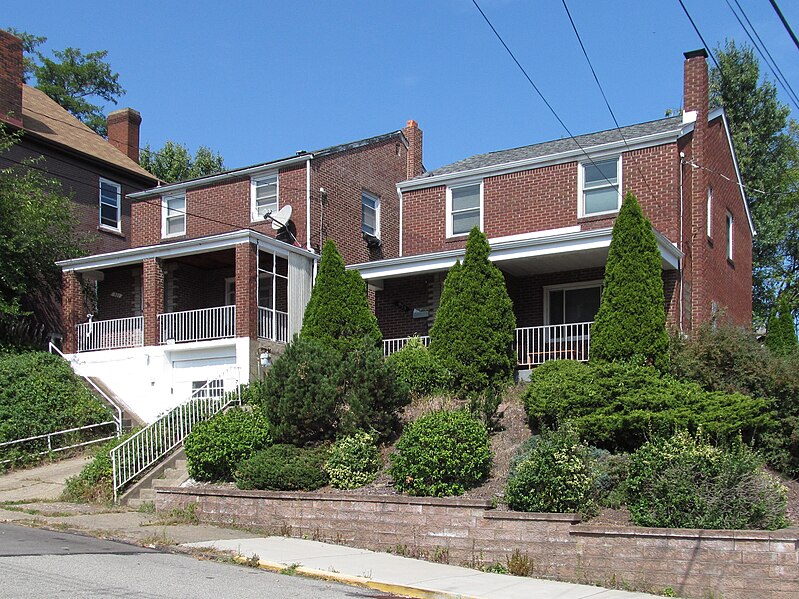
These tiny houses on Frank Street have a historic importance far out of proportion to their cost and size. First of all, they are among the relatively few remaining works of the eccentric architectural genius and flimflam artist Titus de Bobula, the man who would have been Fascist dictator of Hungary if he had had better luck. Second, they are built of reinforced concrete, some of the very first American houses so built. Titus de Bobula was the apostle of concrete in his brief architectural career, and his influence would be hard to overestimate.

The houses have had their separate adventures since they were built, including some artificial siding. This one has had windows and front door replaced, but at least it shows the simple outlines of the design, including the bay window in front.

The house on the end may be the best preserved of the row.

Many sources say that twenty of these houses were built. Six remain, and old Pa Pitt believes there were never more than nine. The architect claimed to have built more, but we cannot rely on anything Titus de Bobula says about his work, because he was prone to exaggeration and outright fabrication.
The houses were an investment by multimillionaire newspaper magnate Eugene O’Neill, owner of the Dispatch and no relation to the playwright of the same name. He owned the land on Frank Street and along Greenfield Avenue to either side. Some architectural historians say that De Bobula rowhouses went up on Greenfield Avenue, but that is contradicted by old maps and today’s evidence.

These rowhouses on Greenfield Avenue, on the land once owned by Eugene O’Neill, were built at about the same time as the De Bobula houses, but these are standard brick. Old maps do show three more concrete houses on Lilac Street, perpendicular to the row on Frank Street, but those were replaced after the Second World War by two larger and more expensive houses:

These two houses stand where a row of three concrete houses, probably by De Bobula, stood in the first half of the twentieth century.
For more on Titus de Bobula and his very surprising career, you can see the article on Titus de Bobula in Father Pitt’s Pittsburgh Encyclopedia.

Leave a Reply